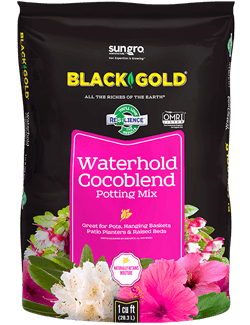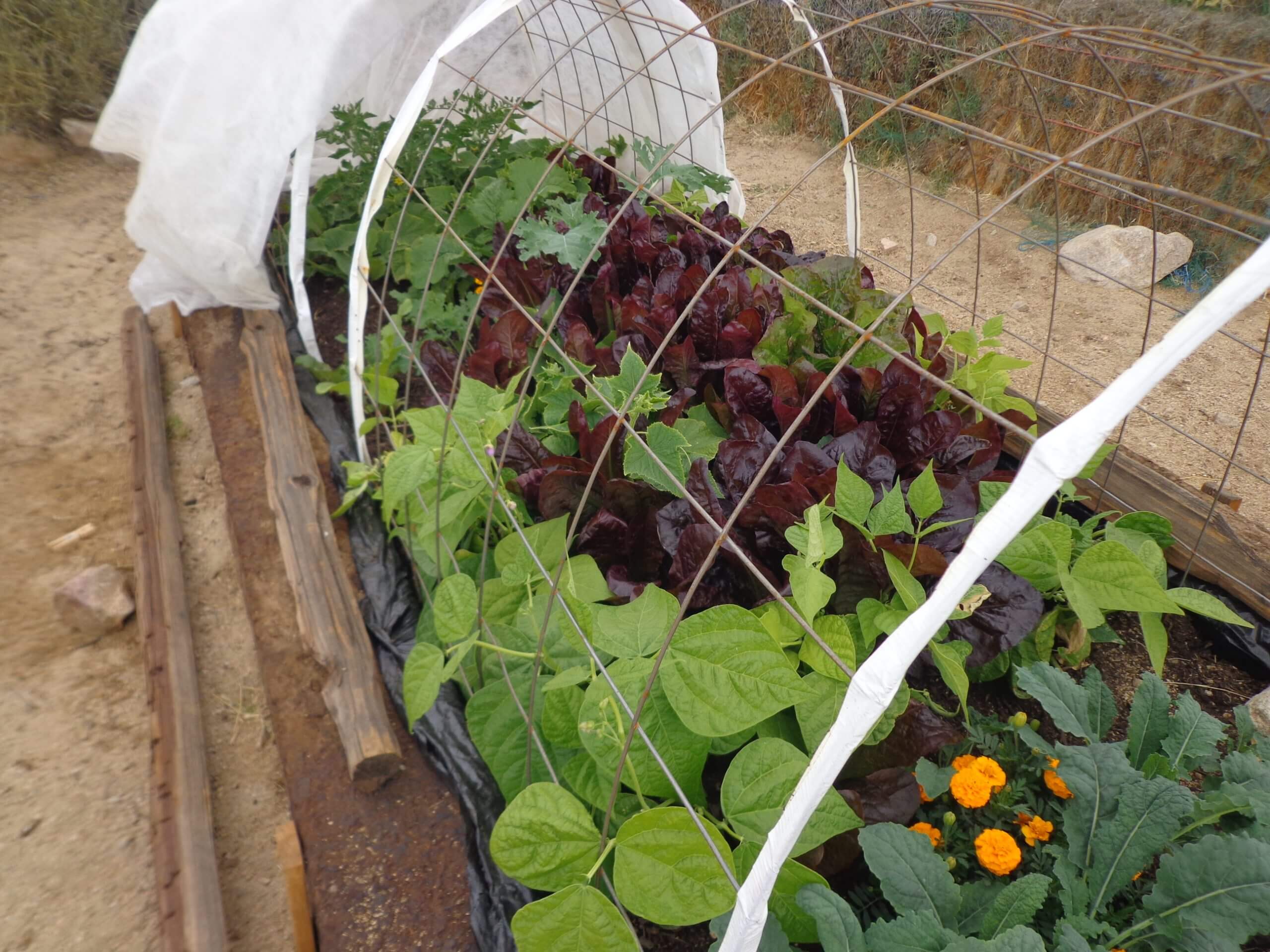 My desert garden is the worst case scenario, and I like it that way. When I test plants and products for gardens, they go through the wringer…literally. I want to know how far I can push things before they fail.
My desert garden is the worst case scenario, and I like it that way. When I test plants and products for gardens, they go through the wringer…literally. I want to know how far I can push things before they fail.
When the dry wind blows up here in the high desert of southern California, it sucks every bit of moisture out of the soil surface. The real problem is called desiccation, which is the process of wind drawing moisture out of a living leaf. Under these conditions, there simply isn’t enough moisture in the root zone to replace what’s lost. Growth slows, leaf edges brown and plants fail to thrive.
I decided to try Black Gold Waterhold Cocoblend Potting Soil to see if it would offer plants more immediate moisture availability. Because my soil is so porous, I simply dug a hole, filled it with Cocoblend and planted tomatoes directly into the potting soil. Nearby I mixed compost and organic fertilizer into my desert ground, which is more like decomposed granite than real soil, and planted more tomatoes there. The test plant groups were no more than four feet apart.
Then came an unusual with cold gale force winds from dawn to dusk. My test took the full brunt of it. The plants in Cocoblend stood the desiccation easily. The others lost their bright green coloring and took on temporary wilt. Frankly, it amazed me that differences were so immediately apparent. And this repeated itself over and over when temperatures soared or more moderate wind blew for days. I could not help but attribute the difference to the coir in the aptly named Waterhold Cocoblend.
 Coir is a byproduct of coconut processing. It is the stringy brown fibers that composed the husk, and these are stripped off when coconuts are processed. When finely ground, this material is proving the most absorptive material available, and yet it won’t pack down over time to cause drainage problems. Best of all, it is recycled, not mined.
Coir is a byproduct of coconut processing. It is the stringy brown fibers that composed the husk, and these are stripped off when coconuts are processed. When finely ground, this material is proving the most absorptive material available, and yet it won’t pack down over time to cause drainage problems. Best of all, it is recycled, not mined.
What this told me is that Black Gold Waterhold Cocoblend Potting Soil is without question the best choice for raised beds in dry climates hot and cold. Somehow the absorbency of coir is so far beyond anything we’ve seen in the past that its revolutionizing the potting soil world. When used to fill raised beds, it is the best choice for sustainability because it is made from recycled material and helps to conserve water. Virtually every drop you apply to the garden will be absorbed and held ready for roots when they need it. Plus, it takes about twenty years for coir to decompose, so you can be sure it’s as viable today as it will be in the future.
The combination of coir and peat moss is biologically active because worm castings are part of the scientifically blended soil. Earth worms process natural soil into castings which are rich in slow release nutrients. They also contain a whole world of microbes which are introduced to this rich organic soil. Some microbes actually make plants more resistant to drought, promote more aggressive root development and improve disease resistance.
Whenever you create a vegetable garden in raised beds, you must fill it with soil. There are many choices available in a wide range of prices. But remember this: You get one chance to fill those beds, and selecting poor, low cost soil means you start off lacking in water holding potential, microbial activity and nutrient loads from day one. That’s a serious problem out west in our hot, rainless, dry environment. You’ll be always running to catch up. That’s no real savings.

